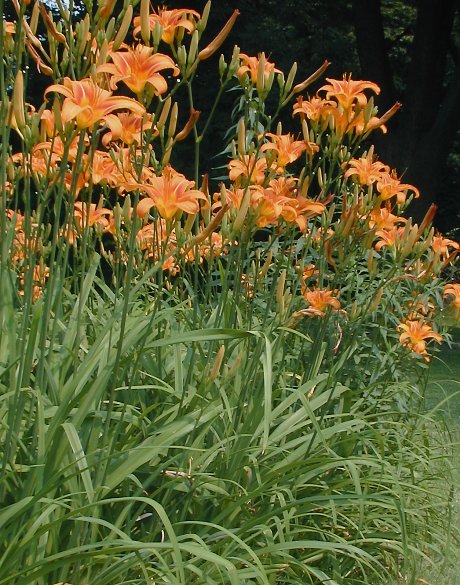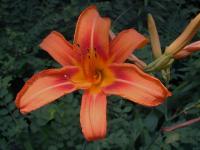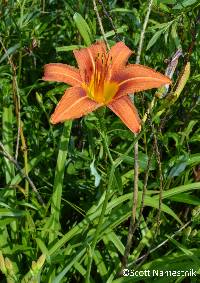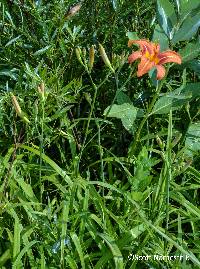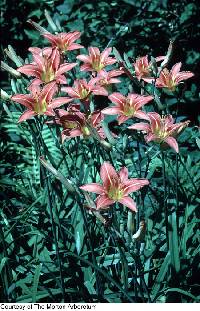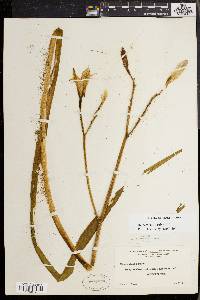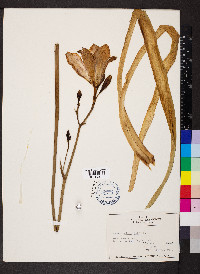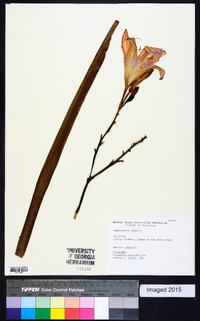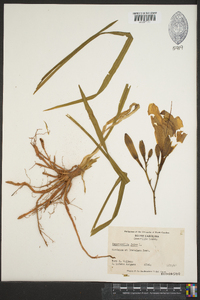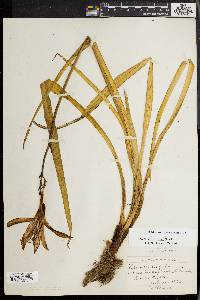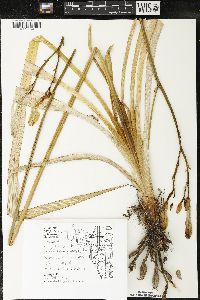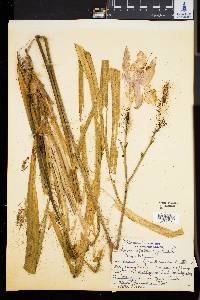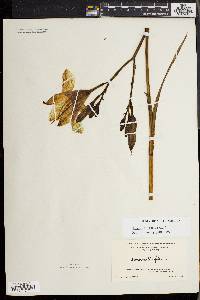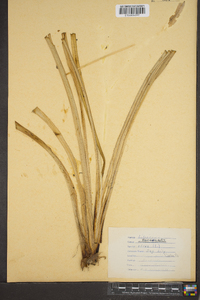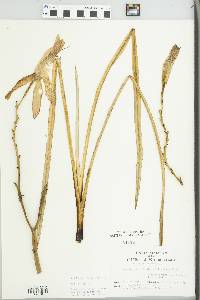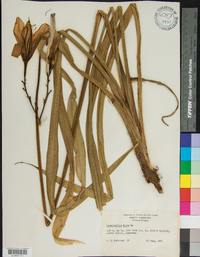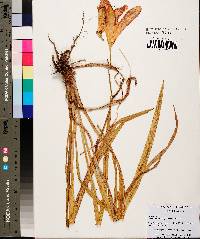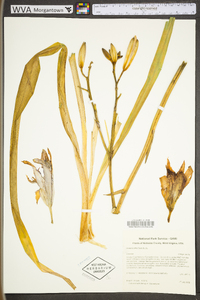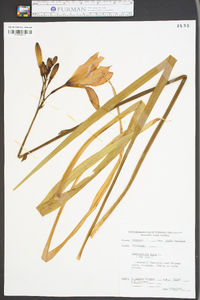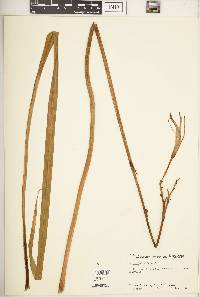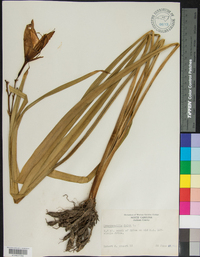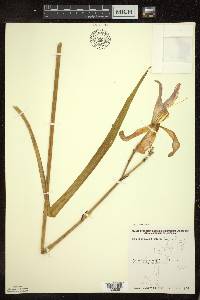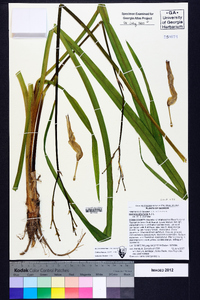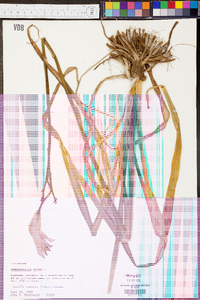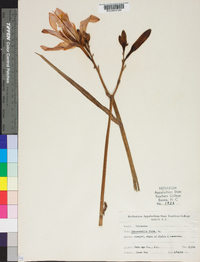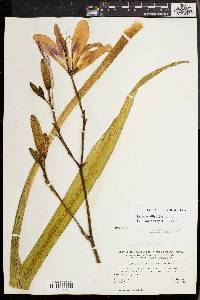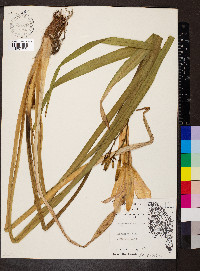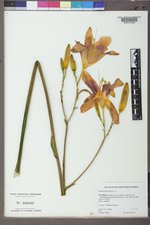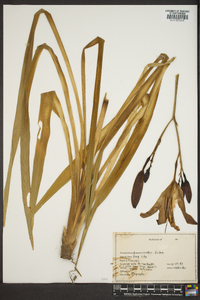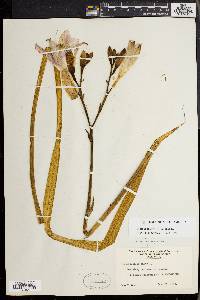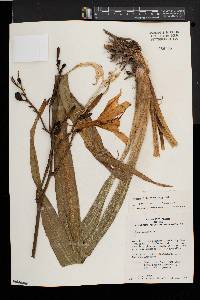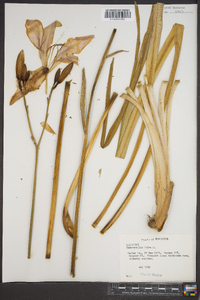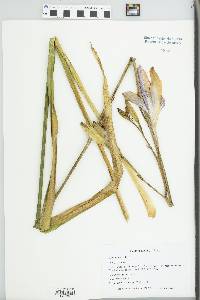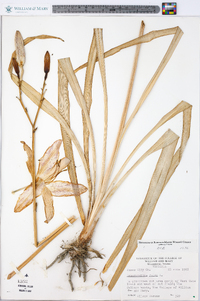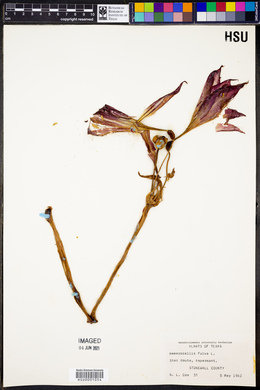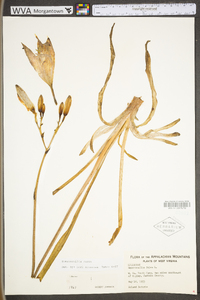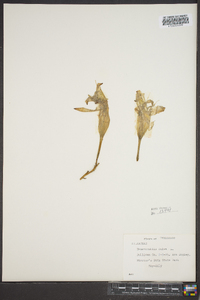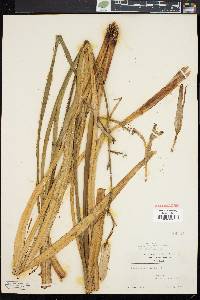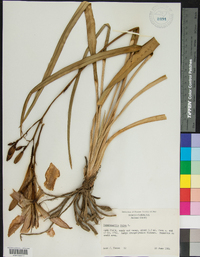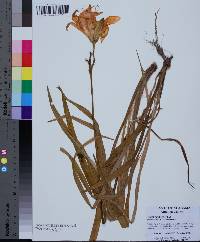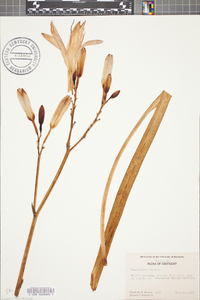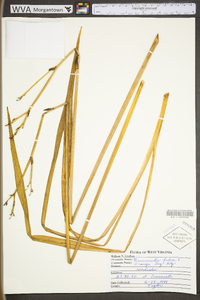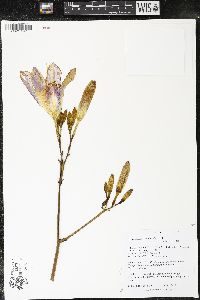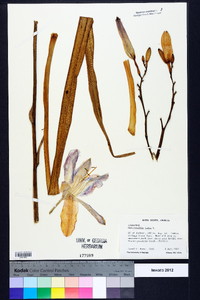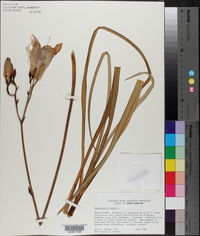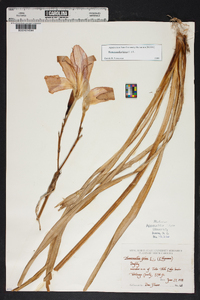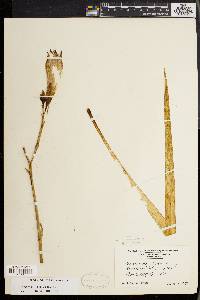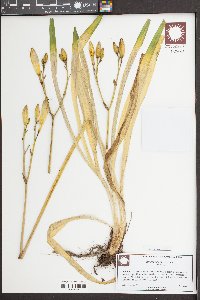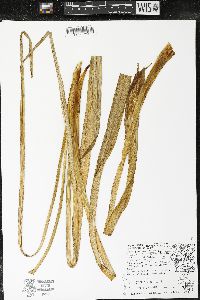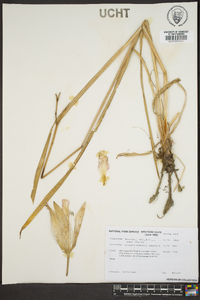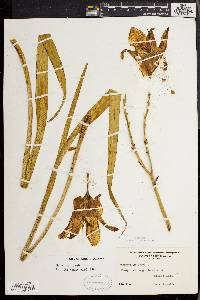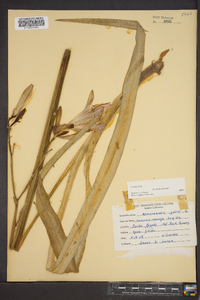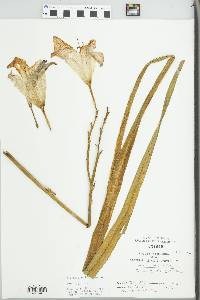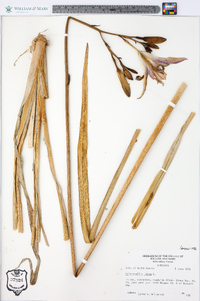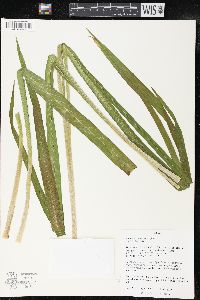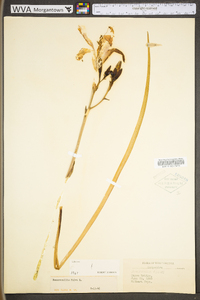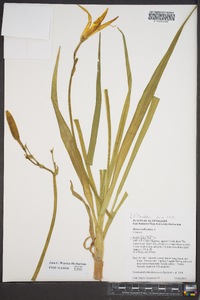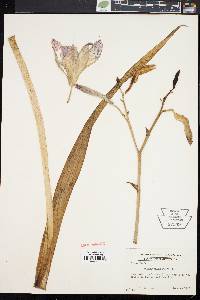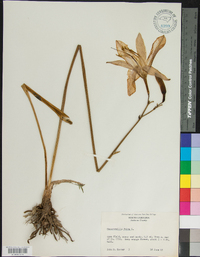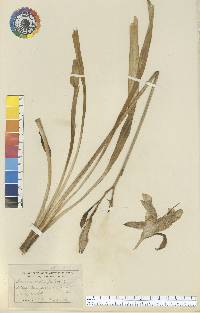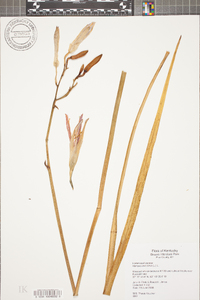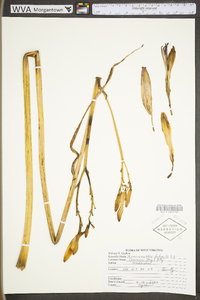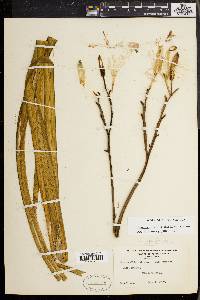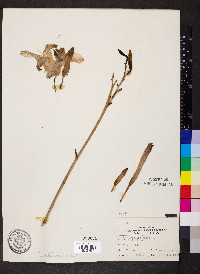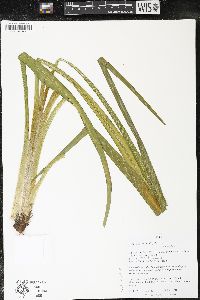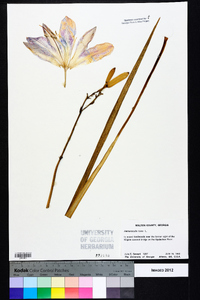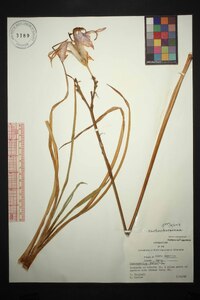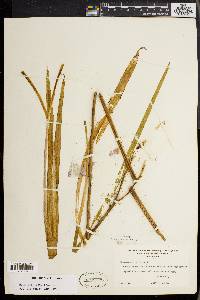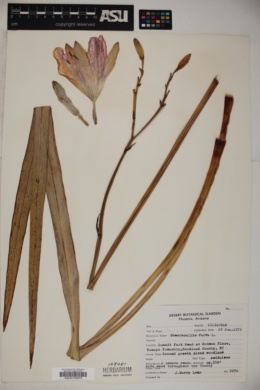Hemerocallis fulva
|
|
|
|
Family: Asphodelaceae
Orange Day-Lily, more...orange daylily, tawny daylily
[Hemerocallis fulva var. kwanso, moreHemerocallis fulva var. rosea] |
Plants 7-15 dm; main roots fleshy. Leaf blade yellowish green, 7-10 dm × (1-)2.5-3 cm. Scape branched, 10-20-flowered, taller than foliage. Flowers diurnal, not fragrant; perianth tube, widely funnelform, 2-3 cm; tepals yellow basally with darker tawny orange zones and stripes, veins reticulate; outer tepals 7-8 × 1.8-2.2 cm, margins smooth; inner tepals 7.5-8.5 cm × 3-3.5 cm, margins wavy; filaments 4.5-6.5 cm; anthers 5-7 mm; ovary 8-10 mm; style white to pale orange, 9-10 cm; pedicel 3-6 mm. Capsules not or rarely developing. Seeds rarely produced. 2n = 33. Flowering late spring--early summer. Roadsides, waste places, homesteads, open forests, stream banks; 0--1000 m; introduced; N.B., N.S., Ont., P.E.I., Que.; Ala., Ark., Conn., Del., D.C., Fla., Ga., Idaho, Ill., Ind., Iowa, Kans., Ky., La., Maine, Md., Mass., Mich., Minn., Miss., Mo., Mont., Nebr., N.H., N.J., N.Y., N.C., Ohio, Pa., R.I., S.C., S.Dak., Tenn., Tex., Utah, Vt., Va., Wash., W.Va., Wis.; e Asia (China, Japan); naturalized Eurasia; expected elsewhere. Following an earlier European introduction from Asia, Hemerocallis fulva was brought to North America in the seventeenth century. This commonly cultivated daylily, the wild type, is distinguished as cultivar `Europa´ Stout and is a self-sterile triploid producing no seed. Essentially, it is a large, complex clone. Plants persist from cultivation or have arisen from root or rhizome fragments, which are capable of plant regeneration. Cultivar `Kwanso´ Regel, another ancient garden selection, persists in many areas along with the wild type and has fully doubled flowers. In eastern Asia, both diploids and triploids occur in the H. fulva complex and have been the basis for extensive breeding and tetraploid cultivar selection (A. B. Stout 1934).
Perennial herb 0.7 - 1.5 m tall Leaves: numerous, basal, yellowish green, long and narrow, to 1 m long and 3 cm wide. Flowers: orange with darker tawny orange zones and stripes, to 12 cm wide, widely funnel-shaped, with six wavy-margined tepals that spread and curve backwards. Stamens six. Flowers lasting a single day and not fragrant. Fruit: a capsule, but usually non-existent. Flowering stalk: (scape) leafless, branched, taller than foliage, and with ten to twenty large flowers. Similar species: Hemerocallis lilioasphodelus is similar but has yellow flowers. It is also very rare in the wild, whereas H. fulva is common. Flowering: June to early August Habitat and ecology: Introduced from Asia. A common escape from cultivation and found along roads and railroads. It forms large, dense colonies. Occurence in the Chicago region: non-native Etymology: Hemerocallis comes from the Greek words hemera, meaning day, and kallos, meaning beauty. Thus, Hemerocallis means "beautiful for a day." Fulva means reddish yellow. Author: The Morton Arboretum Scapes commonly 1 m tall; fls tawny-orange, not fragrant, ca 12 cm wide; sterile triploid, 2n=33, at least as to the commonly cult. and escaped plants. Long in cult., and freely escaped in our range. June, July. Gleason, Henry A. & Cronquist, Arthur J. 1991. Manual of vascular plants of northeastern United States and adjacent Canada. lxxv + 910 pp. ©The New York Botanical Garden. All rights reserved. Used by permission. From Flora of Indiana (1940) by Charles C. Deam This species is ornamental and on account of its easy cultivation it has been freely planted since pioneer times. It never produces seed naturally in this country and propagates entirely by its many tuberous roots. A. B. Stout, of the New York Botanical Garden, has succeeded in producing seed by artificial pollination. He has written many articles on the species and anyone interested should read them. This species is found infrequently in small or large colonies throughout the state along roadsides and about abandoned habitations. When it is once established, nothing can compete with it; hence it forms pure stands. The nativity of the species is not known but most authors give it as Eurasian. ...... Indiana Coefficient of Conservatism: C = null, non-native Wetland Indicator Status: UPL |

